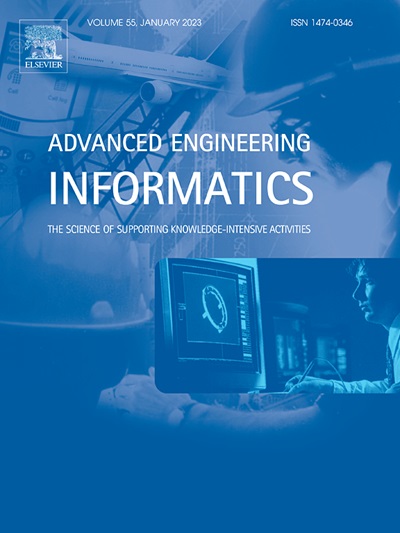Knowledge augmented generalizer specializer: A framework for early stage design exploration
IF 8
1区 工程技术
Q1 COMPUTER SCIENCE, ARTIFICIAL INTELLIGENCE
引用次数: 0
Abstract
In non-routine engineering design projects, the design outcome is determined by how the problem is formulated and represented in the early conceptual stage. The problem representation comprises schemas, ontologies, variables, and parameters relevant to the given problem class. Despite the critical role of early conceptual decisions in shaping the eventual design outcome, most of the computational support and automation are focused on the latter stages of parametric modelling, problem-solving, and optimization. There is inadequate support for aiding and automating problem formulation, variable and parameter identification and representation, and early-stage conceptual decisions. Therefore, this paper presents an innovative, transparent, and explainable method employing semantic reasoning to automate the step-by-step conceptual design generation process, including problem formulation, identification and representation of the variables and parameters and their dependencies. The method is realized through a novel framework called Knowledge Augmented Generalizer Specializer (KAGS). KAGS employs the Function-Behavior-Structure (FBS) ontology and the Graph-of-Thought (GoT) mechanism to enable automated reasoning with a Large Language Model (LLM). The workflow comprises various stages: problem breakdown, design prototype creation, assessment, and prototype merging. The framework is implemented and tested on a Subsea Layout (SSL) planning problem, a special class of infrastructure planning projects in deep-sea oil and gas production systems. The experimentations with KAGS demonstrate its capacity to support problem formulation, hierarchical decomposition, and solution generation. The research also provides new insights into the FBS framework and meta-level reasoning in early design stages.
求助全文
约1分钟内获得全文
求助全文
来源期刊

Advanced Engineering Informatics
工程技术-工程:综合
CiteScore
12.40
自引率
18.20%
发文量
292
审稿时长
45 days
期刊介绍:
Advanced Engineering Informatics is an international Journal that solicits research papers with an emphasis on 'knowledge' and 'engineering applications'. The Journal seeks original papers that report progress in applying methods of engineering informatics. These papers should have engineering relevance and help provide a scientific base for more reliable, spontaneous, and creative engineering decision-making. Additionally, papers should demonstrate the science of supporting knowledge-intensive engineering tasks and validate the generality, power, and scalability of new methods through rigorous evaluation, preferably both qualitatively and quantitatively. Abstracting and indexing for Advanced Engineering Informatics include Science Citation Index Expanded, Scopus and INSPEC.
 求助内容:
求助内容: 应助结果提醒方式:
应助结果提醒方式:


